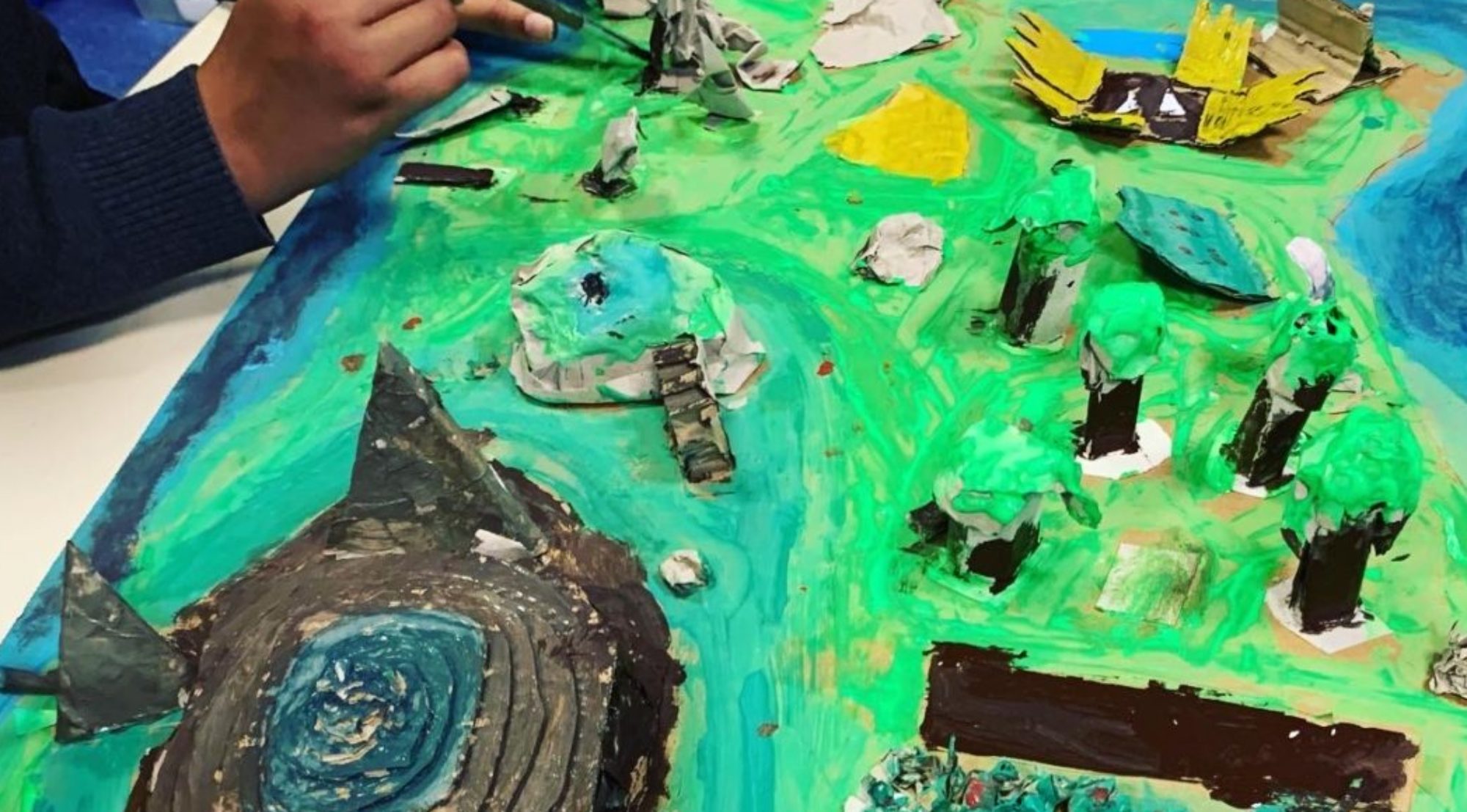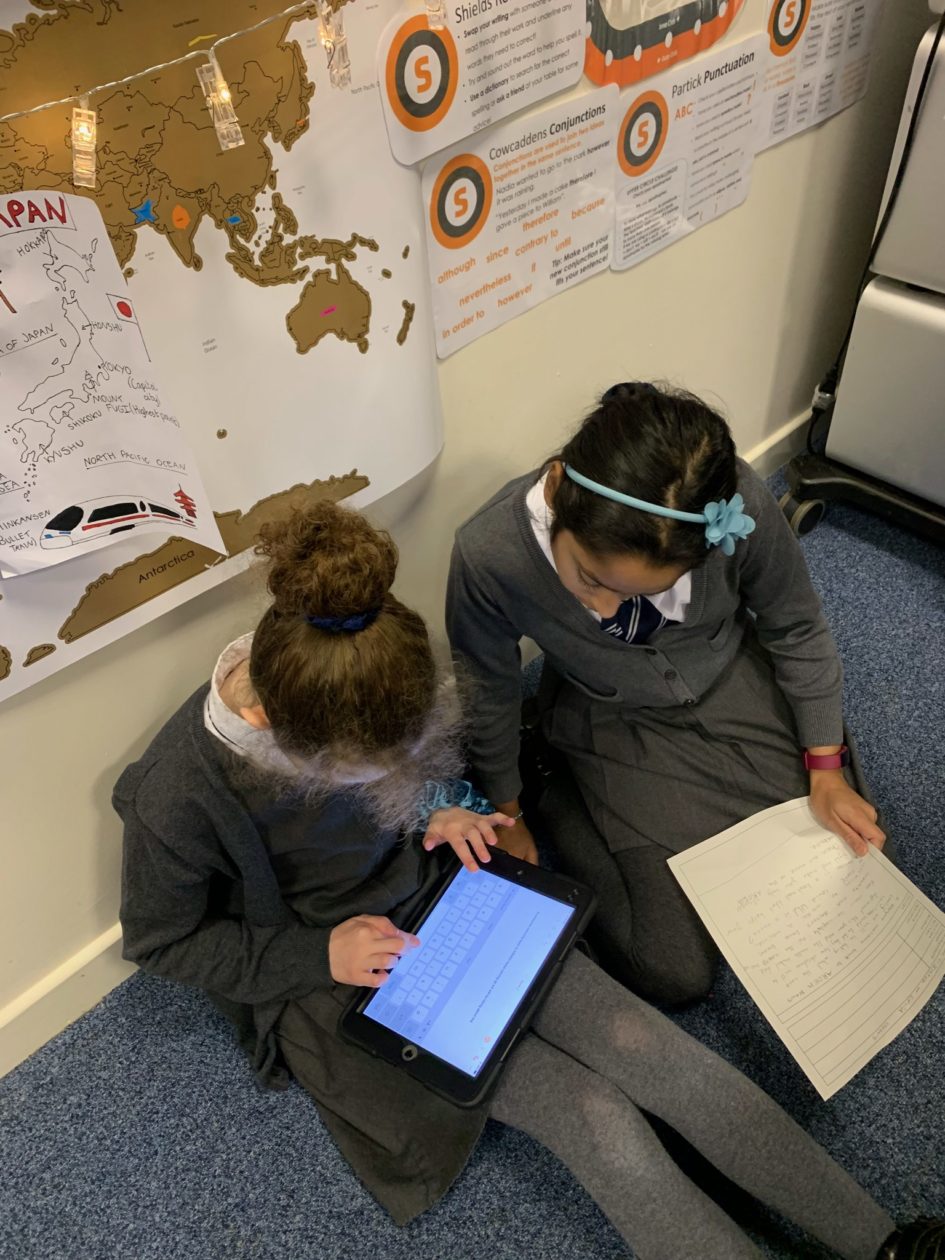Please click on the picture below to watch our second ‘Countdown to Christmas’ video! 🙂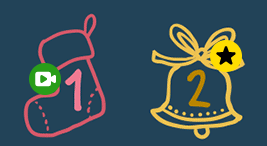
Christmas Advert Analysis
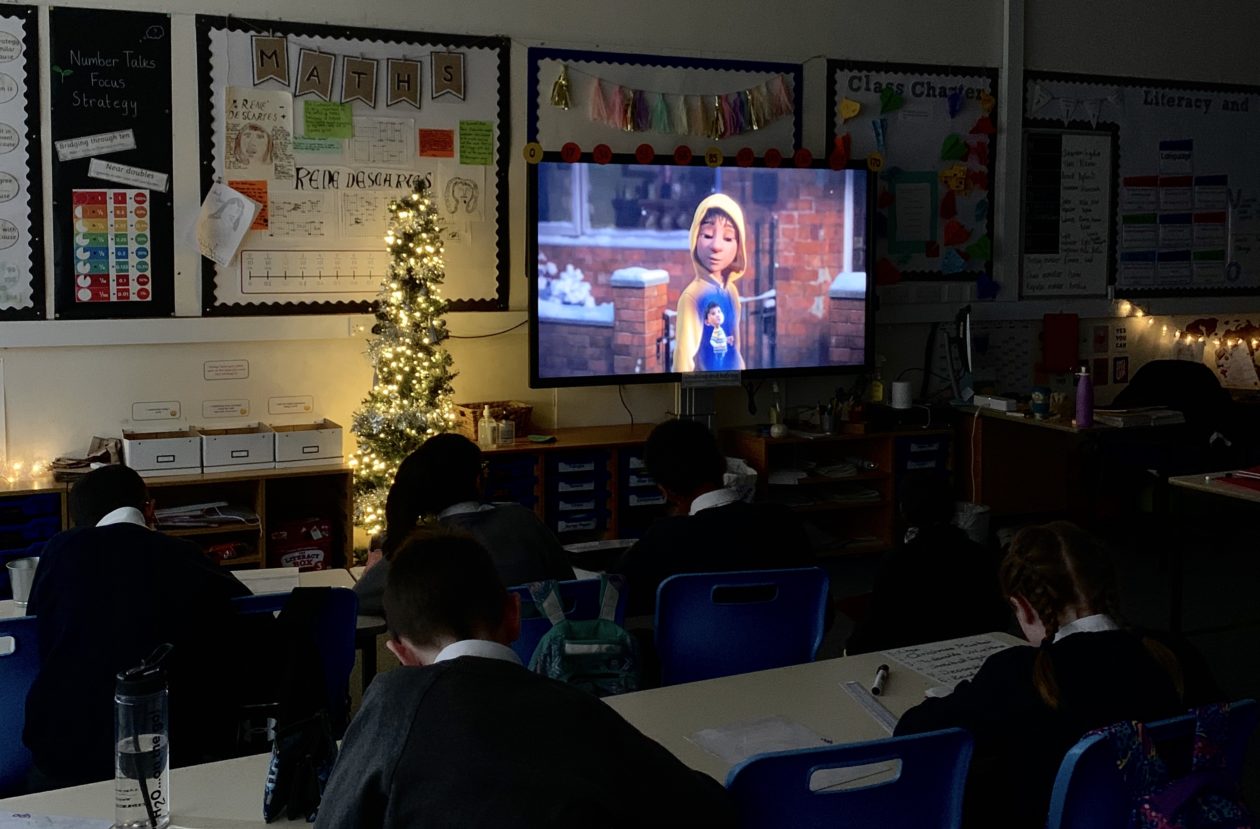
Today in 6.24 we watched the McDonalds Christmas advert. We looked beyond the advertisement element and had a discussion about the message of the advert.
We discussed how it is important to embrace your inner child every so often, regardless of your age. We looked at the body language of the young boy and talked about the effect this would have on his mother.
Next, we will have a go at turning this moving image into a written short story!
Christmas Countdown – Day 1
Throughout December, 6.24 will be releasing daily videos for pupils, parents and guardians to watch at home. The video link will be posted on Google Classroom and the class Glow Blog. These videos have been created, directed and produced by pupils in 6.24. The first video is a News Report we filmed last week and it has a Christmas quiz at the end! We hope you enjoy them as much as we have enjoyed creating them!
Click on the picture below to watch the first video!
Click on the green video icon on number 1 and then follow the instructions.
Apostrophes
P6 were revising the purpose of apostrophes in contractions today. Forming a contraction always involves using an apostrophe, followed by one or two letters that work as an abbreviation for the words being combined.
Furthermore, forming contractions results in unseen levels of competitiveness.
Filming News Reports
INHERITANCE
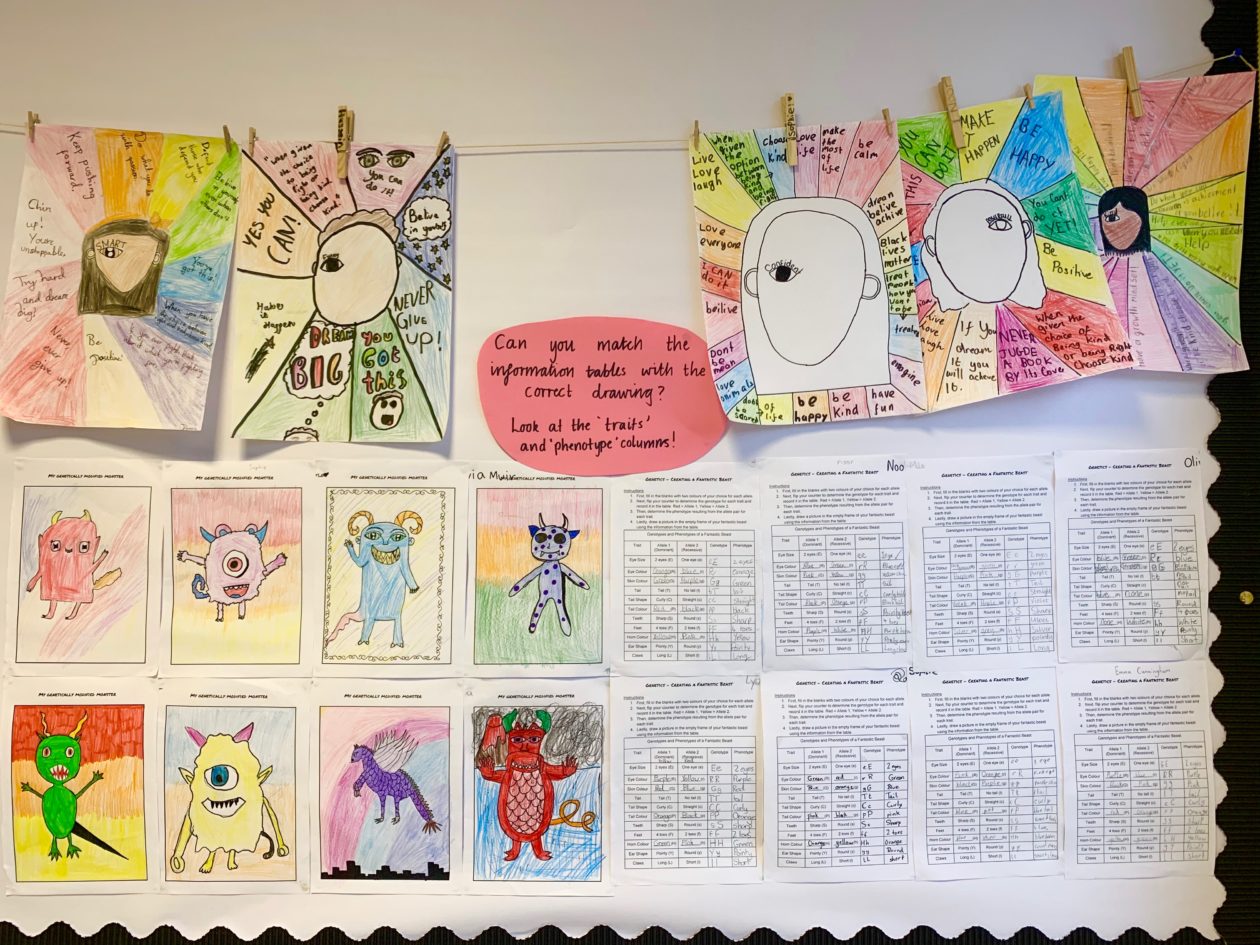 Hi everyone! Today we will be telling you about our Wonder inspired monsters that we created to learn about the inheritance of genes. We hope you enjoy this blog!
Hi everyone! Today we will be telling you about our Wonder inspired monsters that we created to learn about the inheritance of genes. We hope you enjoy this blog!
What Inspired our Interest in Inheritance
We are reading a book called Wonder. In the book there is a boy called August who has a defective gene passed down from his parents which means he has Treacher Collins Syndrome. We were interested in how August inherited the gene from his parents even though his parents don’t have Treacher Collins Syndrome, so Miss McLaughlin organised a science lesson on it.
The Task
Our task was to create a monster by flipping a counter to decide what genes the monster inherits from its parents . The counter decided on the skin colour, the horns, the teeth, the claws and a lot of different things. The picture below shows some of our genetically modified monsters. See if you can match up the drawings with the phenotypes (the observable trait).
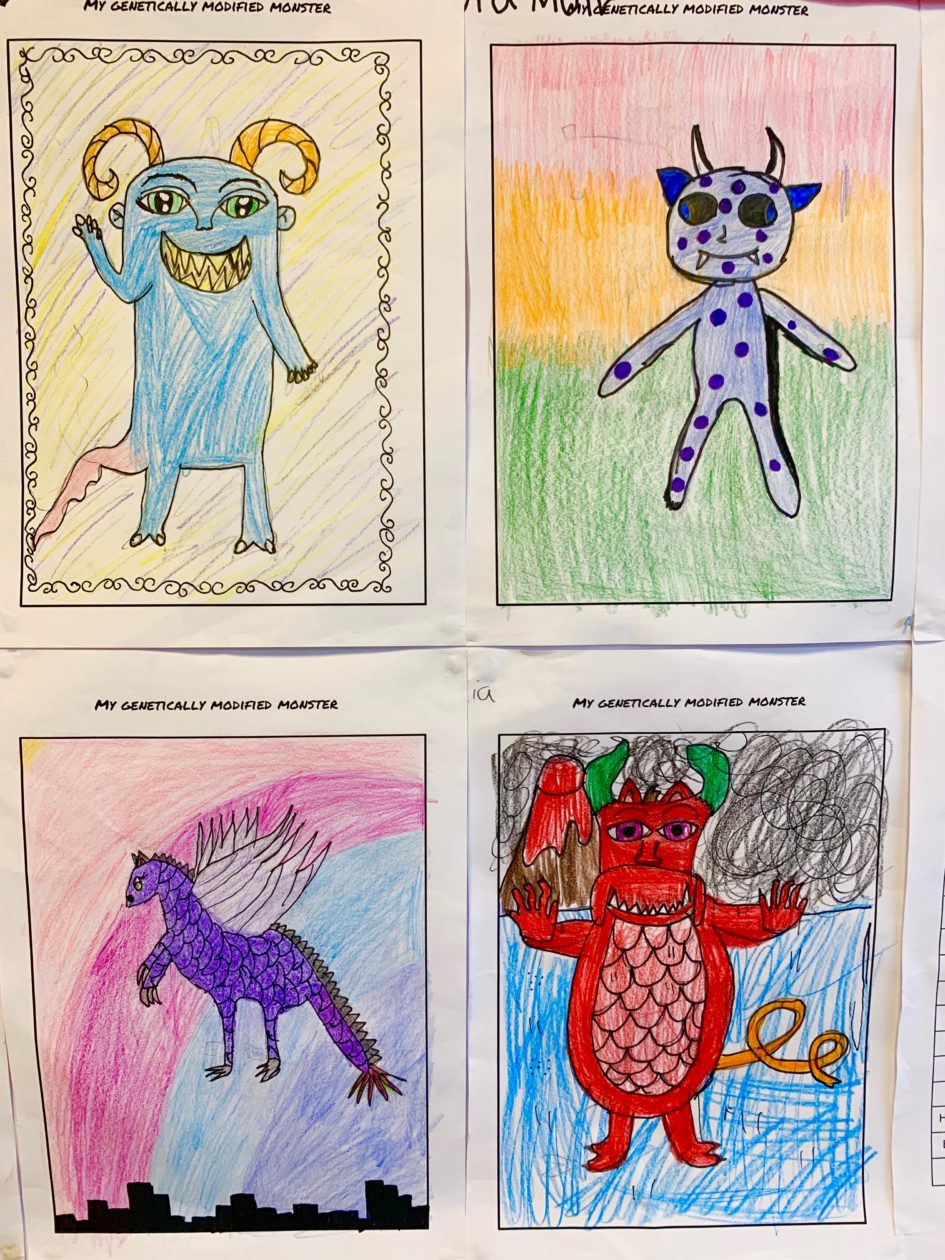
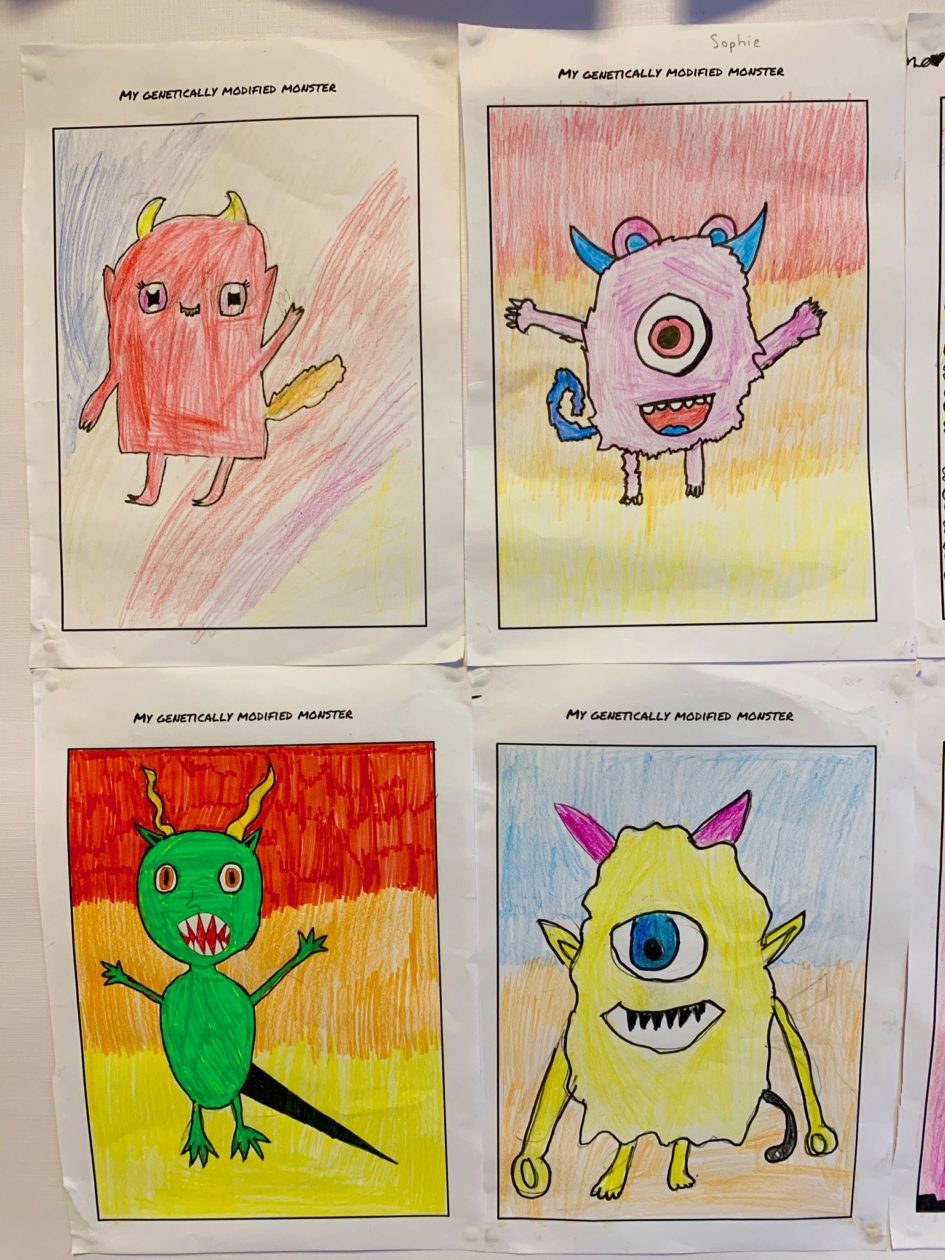
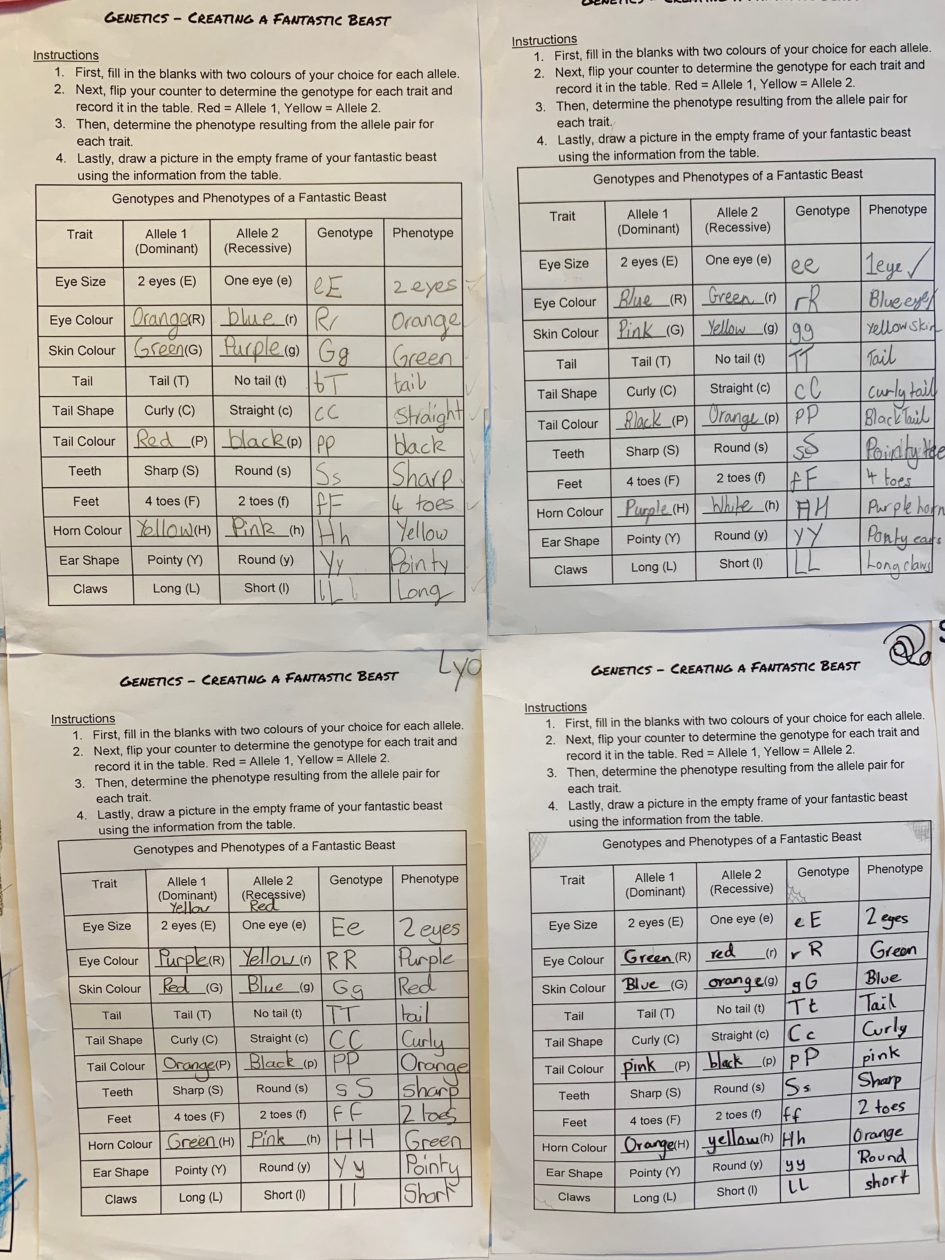
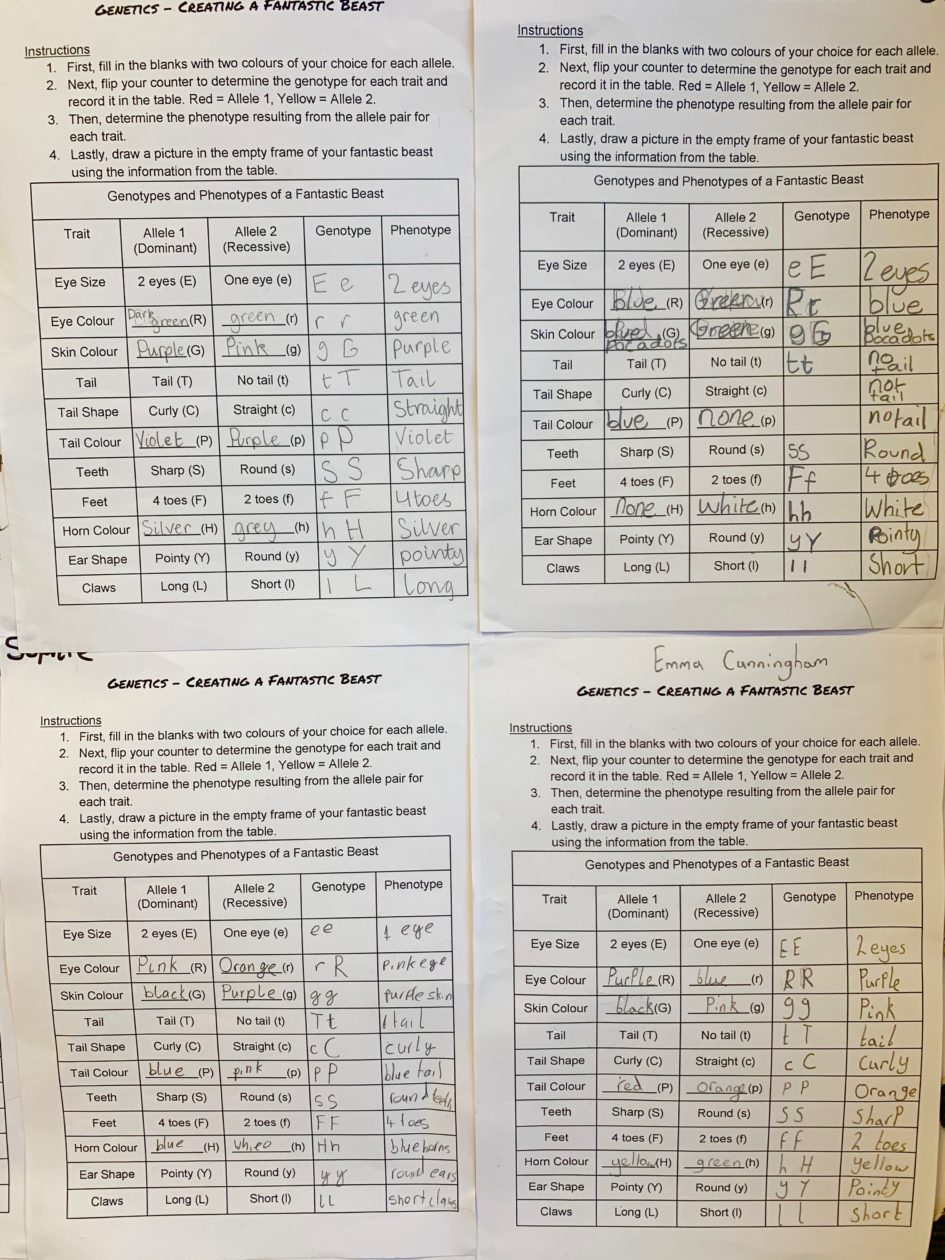
What we Learned
We learned how to use punnett squares to describe how the genes are passed down and the chances of you getting the syndrome or carrying the gene. We learned that everyone carries a pair of genes (not the trousers) and some genes are recessive and some are dominant.
We hope you liked our blog bye!
Food Chains and Endangered Species
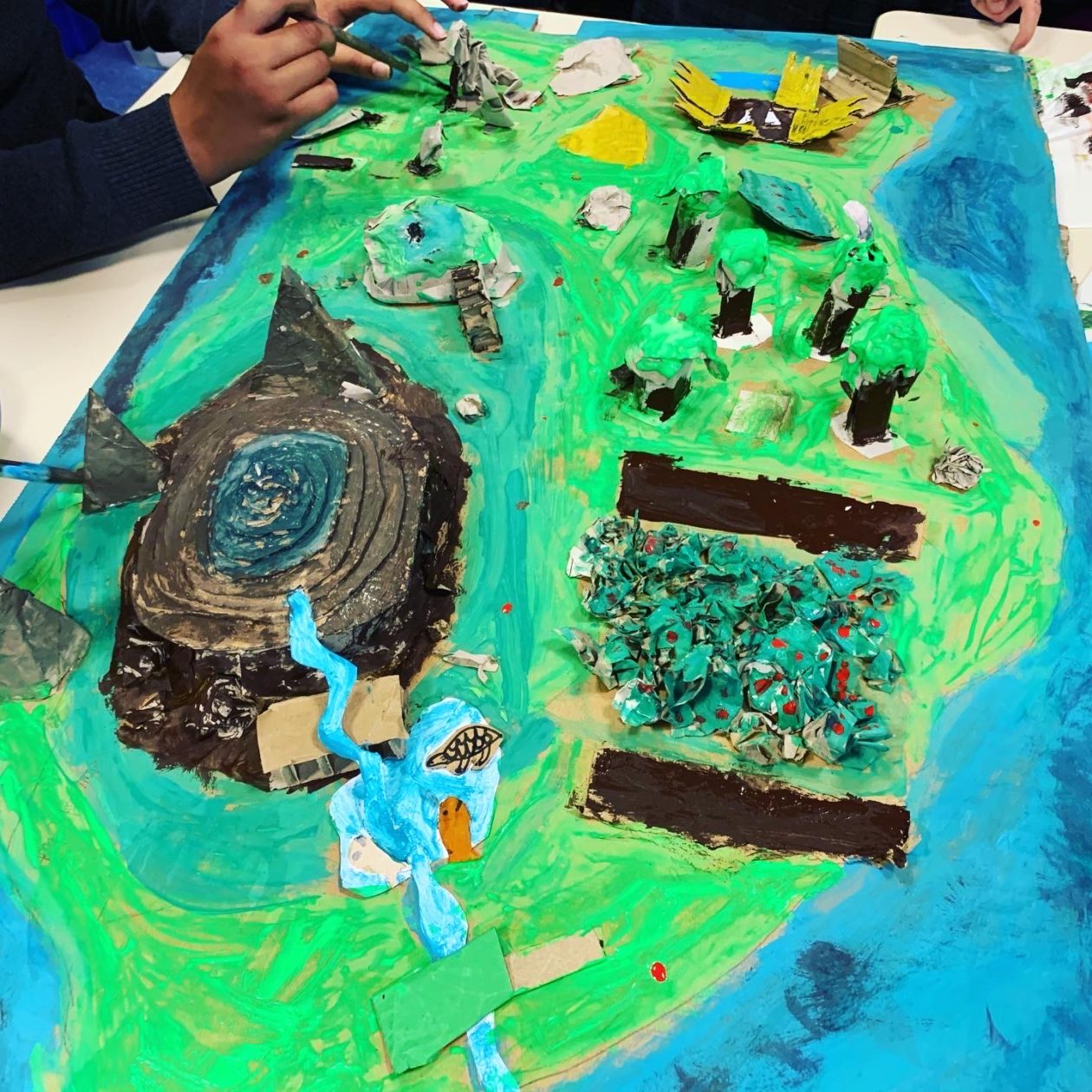
Introduction
Hello it’s Bella, Hannah and Lydia again. Last month we started a topic on food chains and endangered Scottish wildlife. We have researched, drawn, taken notes and built models for this topic . We have learned that a food chain only works if all the animals are there to support it, and why some endangered species are endangered. We hope you enjoy this blog as it is our last one!😊
In class we have also been using the chrome books to research endangered species. We were tasked with choosing an endangered animal form Scotland. Miss McLaughlin gave us a sheet with questions and information to find out about our species. After that we had to use our research to write a report. When it was time to redraft our report we were given the choice to redraft on paper or on google docs using the chrome books. I am happy that we had that choice :). We all loved researching our chosen species.

Animal conservation
We have designed and built 3D models of conservation islands . Our research helped us with this because we had to know our animals’ habitat and food chain so we could design an island that would protect our chosen endangered species. When we were building our model islands we looked at topography (which is the arrangement of the natural and artificial physical features of an area) for inspiration.
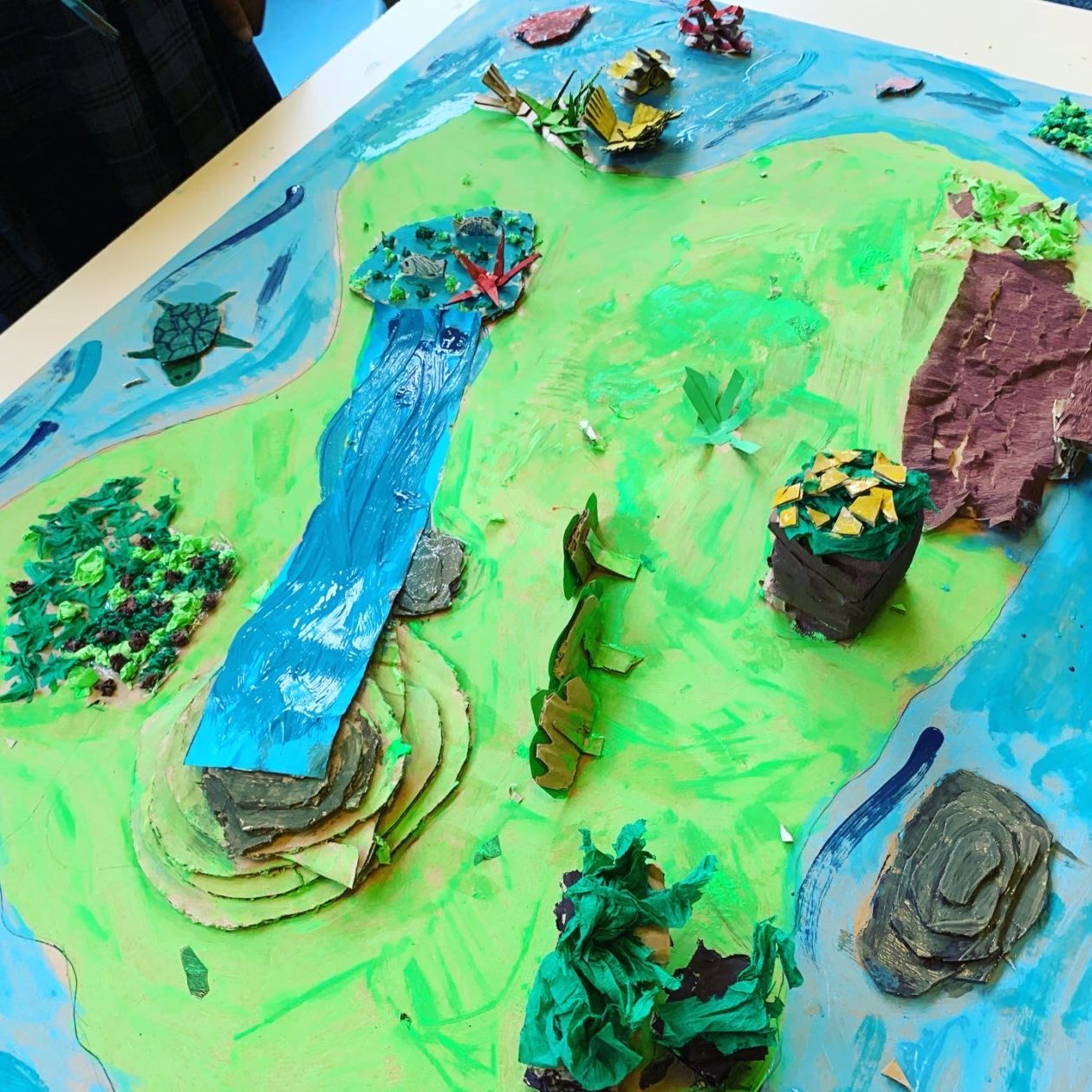
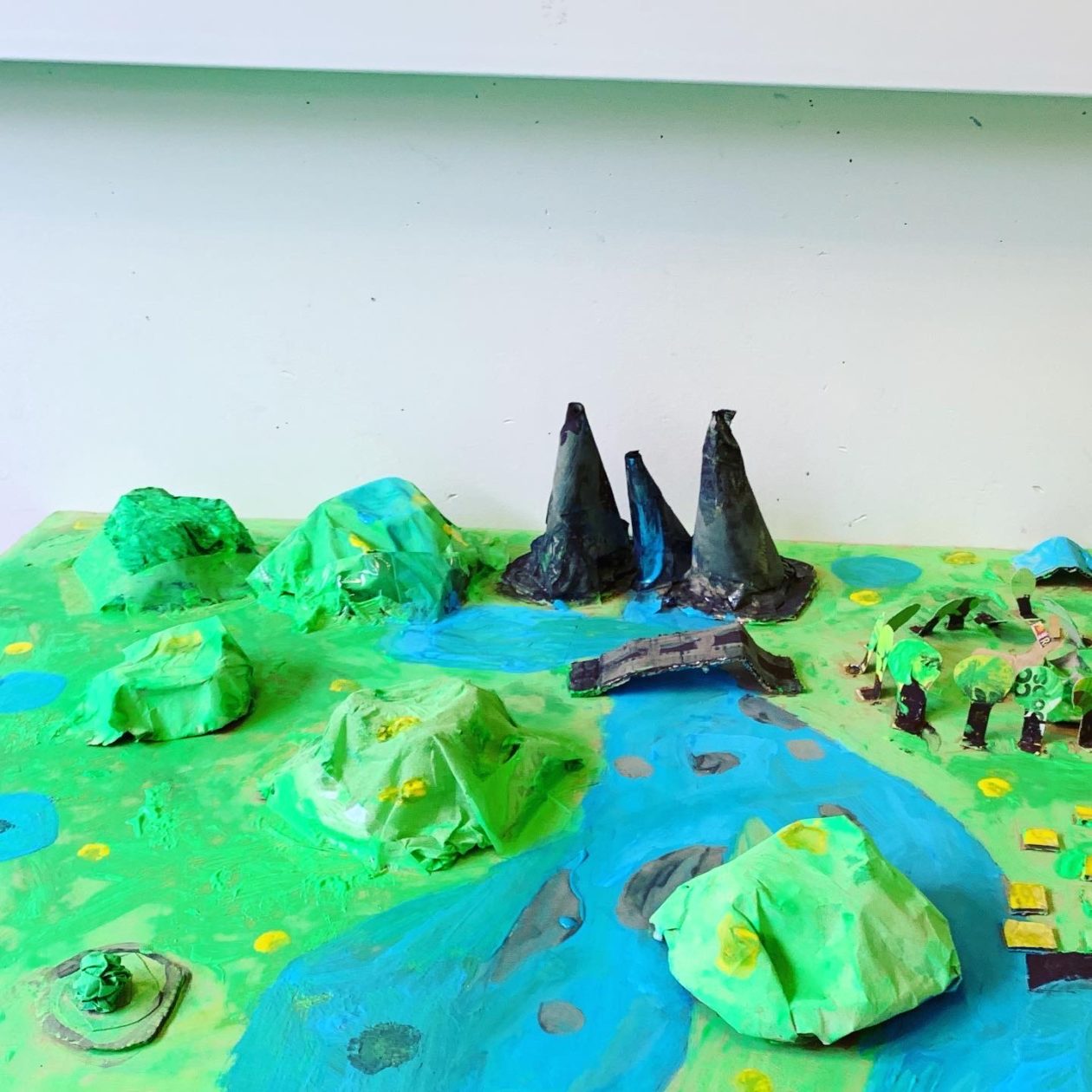
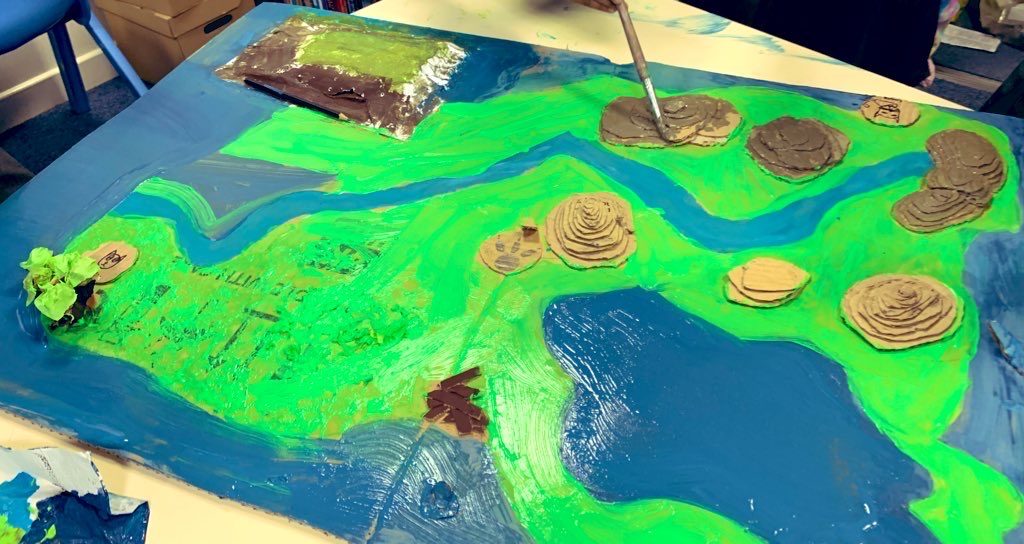
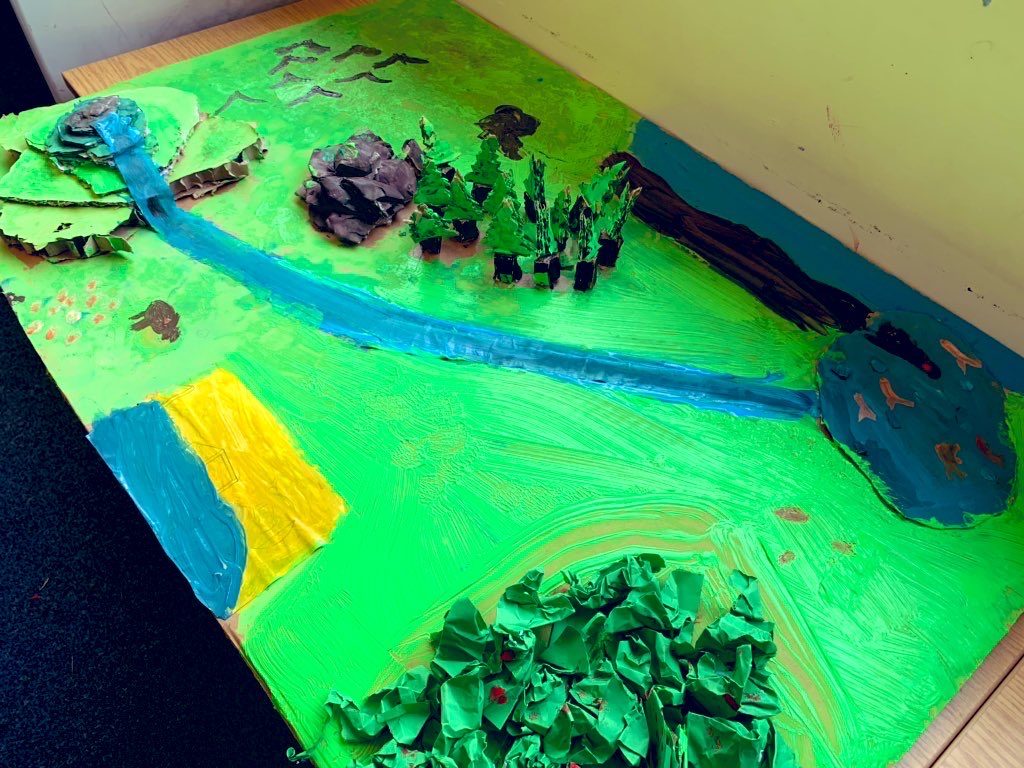
Persuasive Letters
We all wrote persuasive letters to Nicola Sturgeon about building our conservation islands. We had to include why the species are endangered, what we can do to stop them going extinct and what our conservation islands should include!
Food Chains
We have also been learning about food chains and webs. Food chains show the transfer of energy between animals. Here is an example: All food chains start with the sun. The sun transfers energy to the grass (through photosynthesis). A rabbit eats the grass and takes the energy. A snake then eats the rabbit and takes the energy from the rabbit and the grass. An eagle eats the snake and consumes energy from the grass, the rabbit and the snake.
Photosynthesis
Photosynthesis is the process where plants use sunlight to absorb nutrients from water and carbon dioxide and create energy.
Maths Week Showcase
Hi, it’s the new blog squad for 6.24 here. It’s Sophie , Emma & Noor. This week’s blog is about our fun maths week activities and our mathematician.
Our Mathematician
Our mathematician is … Rene Descartes. We learnt about the Cartesian coordinates system and how he created them whilst looking up at his ceiling in his nice warm bed watching a fly. If you want to listen to Rene telling you more ,watch the video below !
How Rene Descartes created the Cartesian Coordinates system
As we already told you how Rene spotted the fly now we’re going to tell you how the Cartesian Coordinates system was made . Rene had a square tiled ceiling. He wanted to figure out how he could describe the fly’s exact location. So he used Geometry and Area to figure out where the fly was going . Now this type of coordinate is called the Cartesian Coordinates – there is an example of what this would have looked like in our maths week showcase video.
Planning Our Skyscrapers
For maths week we made skyscrapers out of paper and paper straws.We started by planning our sky scrapers on a square grid,and then drew a larger, scaled up grid on a bigger piece of paper. We then copied the skyscraper blueprints from the smaller grid onto the bigger grid.
Building our skyscrapers
We started by getting 50 straws for each group,then we used tape and string to stick out structures together.We then watched a video about different structures and we found out triangles are the strongest shape because they distribute the weight all throughout the shape.After we had finished we thought our skyscrapers looked like skeletons so we covered them in coloured paper.
The end,thank you for reading our blog see you sooooooon…
Maths Outdoors
Maths Board Games
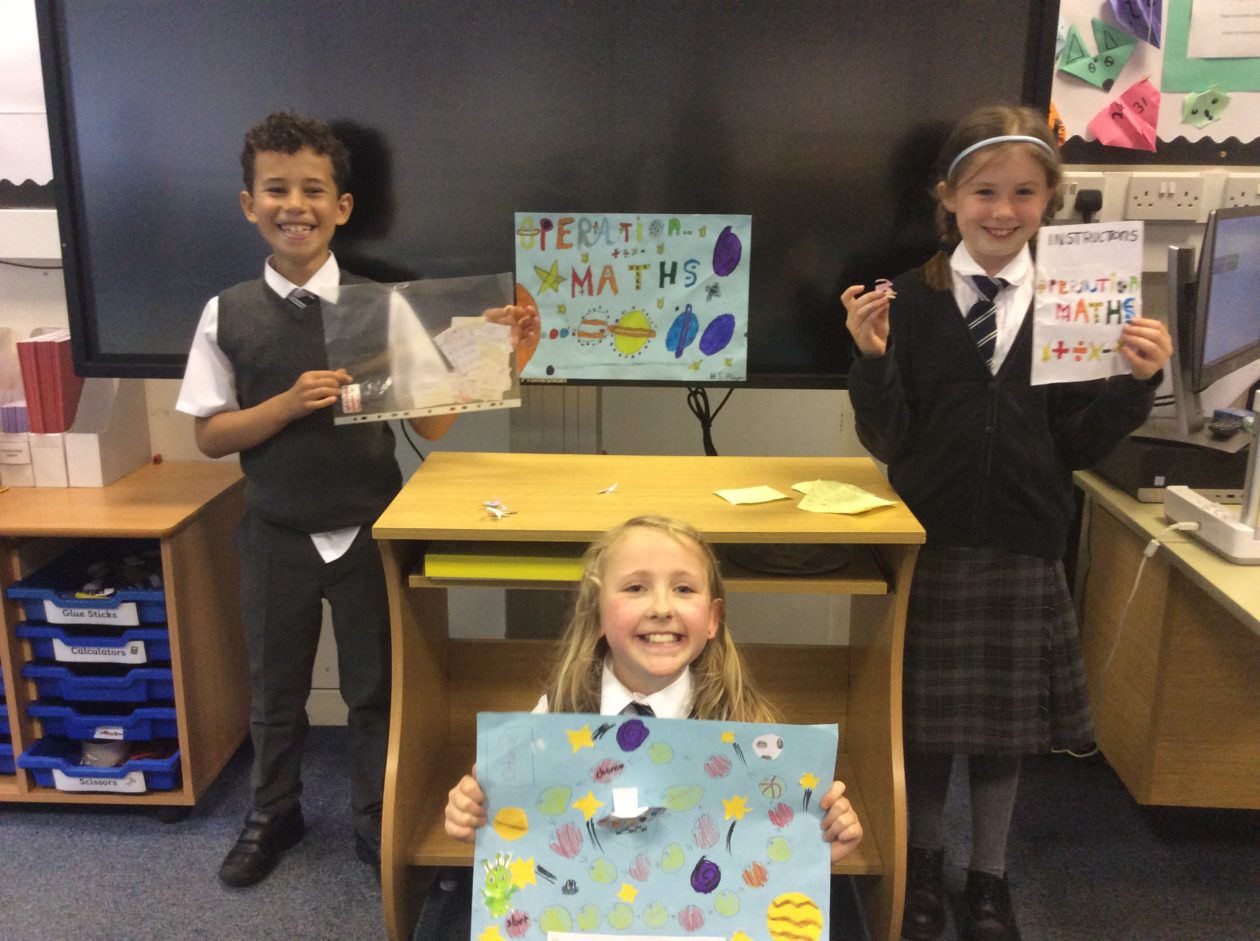
Hi, it’s Lydia, Hannah and Bella again. Today we’ll be telling you all about the process of making our board games and how we made them. We had to create a board game which had mathematical problems related to the four operations (addition, subtraction, division an multiplication).
Our board games took a lot of creativity, thought and teamwork. Our board games are maths themed so they also sharpened our maths skills.
The first board game was created by Lydia, Hussein, Sophie and Suhaana. It is called Operation Maths.
The second board game was created by Noor, Hannah, Bella, Isaac . It is called Mathopoly.
The third game is called Maths Monopoly and was created by Zain, Aishah, Amelia, Dylan CF and Kyle.
The fourth game is called Monopoly Maths Edition and was created by Khadija N, Khadija M, Kadi and Shreya.
The fifth one is called Maths Mayhem and it was created by Alex, Adam, Naomi, Emma and Mila.
The one below is called Maths Monopoly and was created by Riyad, Dylan D and Himmat.
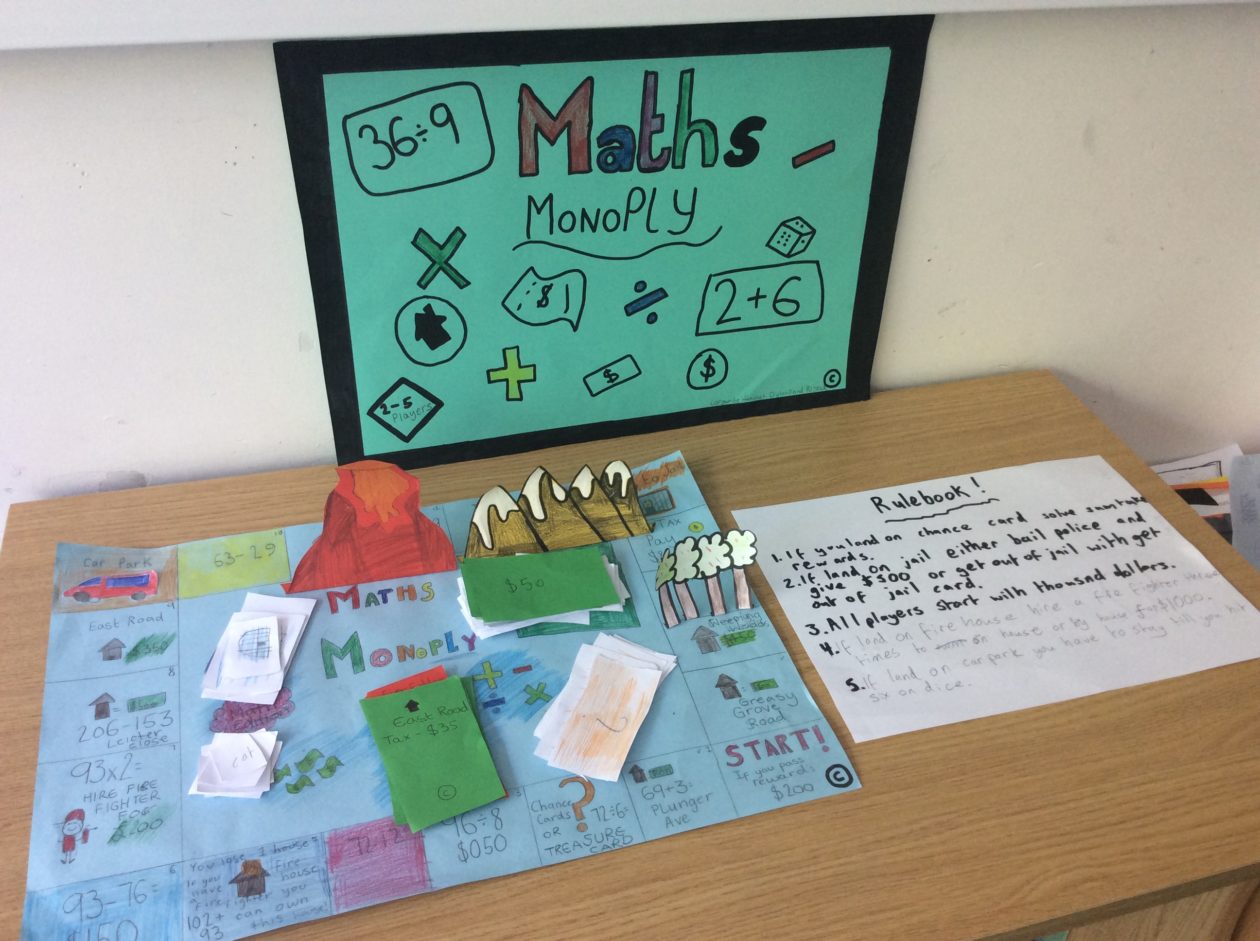
The last one is called Mathematical Cluedo and was created by Roma, Erin, Olivia and Zainab.
